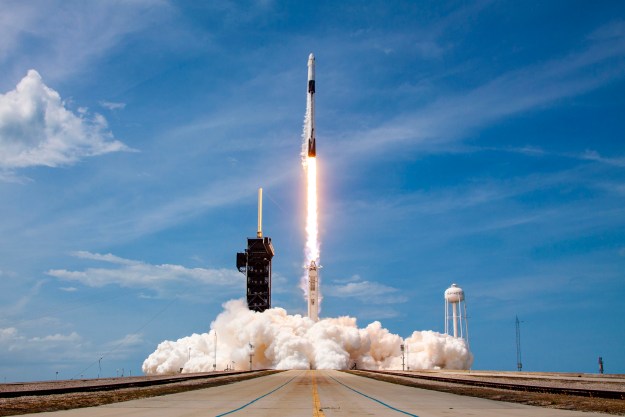Following a meeting among mission managers on Thursday evening, NASA confirmed it’s still on for this weekend’s second try at launching the Space Launch System (SLS) rocket, the agency’s most powerful rocket to date.
In a mission set to usher in a new era of space exploration, the SLS is scheduled to lift off from Pad 39B at the Kennedy Space Center in Florida on Saturday afternoon, propelling an uncrewed Orion spacecraft toward the moon where it’ll perform a fly-by before returning to Earth in mid-October.
Between now and then, two things could interfere with the launch schedule: Last-minute technical issues and poor weather conditions. The former is what did for NASA’s first SLS launch attempt on Monday, when, just 40 minutes from launch, engineers spotted an issue with engine number three on the rocket’s core stage. The issue has been resolved, but whether another technical problem surfaces before the weekend lift-off remains to be seen.
As for Saturday’s weather, the current forecast looks just about favorable for launch, with a 40% chance of violating weather constraints, according to the 45th Weather Squadron, which provides detailed assessments for air and space operations in the U.S.
“This weekend, easterly flow becomes deeper through the atmospheric column while moisture levels remain near seasonal levels,” the squadron said in its latest update issued on Thursday. “This should allow the East Coast sea breeze to form scattered showers in the early afternoon Saturday, but gradually push the activity westward during the late afternoon hours, away from the Spaceport.”
It said the main concern at the current time is cumulus clouds (“fluffy” or “puffy” clouds) along the flight path, as these could lead to lightning strikes as the rocket passes through them.
As per NASA: “Even when there’s no thunder, rain, or lightning present, the risk of lightning still exists, but it’s a different type of lightning than meteorologists worry about.
“A launch vehicle and its plume ascending through [certain types of] clouds can trigger lightning at lower electrical fields than required for natural lightning. That’s because the vehicle and the plume act as conductors and decrease the electrical field strength necessary to create a lightning flash.”
Should NASA delay the launch until Monday, the squadron currently sees a 30% chance of violating constraints for that day, citing the same concern.
Thousands of spectators who traveled to see the launch in person were left disappointed on Monday when NASA’s mission team decided to scrub the launch shortly before lift-off. Many will be returning again on Saturday, though if you want to watch it from the comfort of your own home, Digital Trends has you covered.
Editors' Recommendations
- NASA astronauts need good weather for Crew-8 launch. Here’s how it’s looking
- Five rocket launches to look out for in 2024
- NASA astronauts sign their moon rocket
- NASA’s Artemis II moon capsule receives vital component
- NASA’s Artemis moon astronauts suit up for mission practice run


